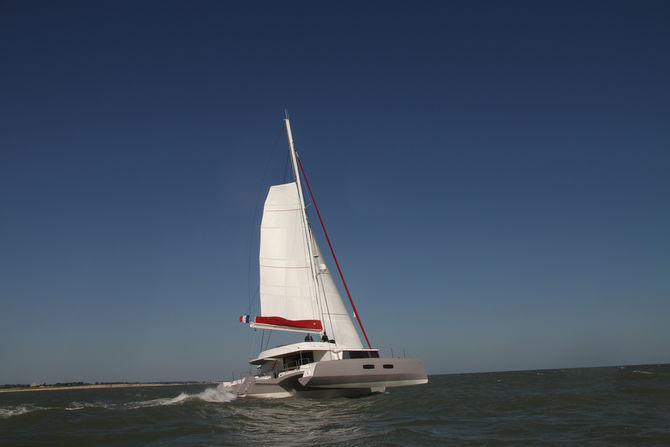
Issue #: 154
Published: July / August 2017
- Price per issue - digital : 5.70€Digital magazine
- Price per issue - print : 7.70€Print magazine
- Access to Multihulls World digital archives Digital archives
Since their development at the beginning of the 80s, roller masts and booms have made maneuvers much easier, but have not been free of technical problems, which deterred more than a few people at the moment of a potential purchase. Let’s take stock of the development and manipulation of this equipment which, aboard a modern multihull, nowadays makes perfect sense.
If we are honest, we have to admit that we all have secret thoughts about no longer having to go to the mast foot to hook the tack of the second reef, no longer having to take in the kilometers of the 3rd reef pendant (inevitably the longest), not hesitating to take in the first or second reef, no longer having to untangle the mass of knots piled up at the mastfoot or in the cockpit, and being able to hoist (or rather unroll) without the lazy jacks getting in the way of the maneuver. Better still, without the pendants, lazy jacks and bags, your boat’s lines will be more refined, won’t they? And finally, you will no longer have the task of folding the sail when furling, which aboard a catamaran can sometimes involve acrobatics worthy of a trapeze artist.

Be honest, this idea has certainly passed through your mind. But you have probably also heard on the pontoon grapevine about a lot of misadventures, which has made you hesitate, or even abandon the idea of putting it into practice. In first place, the (real) risk of trapping the sail in the profile, which can happen following poor handling of the line and the foot rope, which is let out with no synchronization (or lines which slacken off with time) in the mast mandrel. Then there is the raised center of gravity of a roller mast, due to the sail being rolled aloft. Finally, the concave shape of the sail, which loses 15% of its area, is also prohibitive on multihulls, which always have a large roach. For sure, a roller boom remedies these problems, but it also has its own problems. The belly of the sail can cause folds which aren’t absorbed and roll into the boom, its angle with the mast must be fixed, and it requires a rigid gas kicker which is incompatible with rigs situated just ahead of the coachroof. And the bolt rope can roll on itself and is subject to severe chafing.

However, technology and developments have allowed the picture to improve considerably over the last few years, and the equipment is now reliable, if certain rules are respected. And with this type of equipment, maneuvers can be carried out singlehanded, which is not the least of advantages when your little family is sulking at the moment of getting under way or reducing sail. Maneuverable with just two lines, one which rolls and the other which unrolls, it’s made even easier, as an electric winch is necessary – it’s impossible to set the sail without the winch with this system, and the time taken to unroll or hoist may seem long by hand. It’s quick and easy, and all you have to do is keep the tension on the line which is being reeled in (pendant, halyard or foot, depending on the case) so that no folds form during rolling, or fit a halyard brake.
What more could you ask for to enjoy the performance of your multihull without needing a large crew?
Roller masts
Several manufacturers offer production roller masts. Sparcraft uses an endless screw system with a control line which is led back to the cockpit. ...
What readers think
Post a comment
No comments to show.